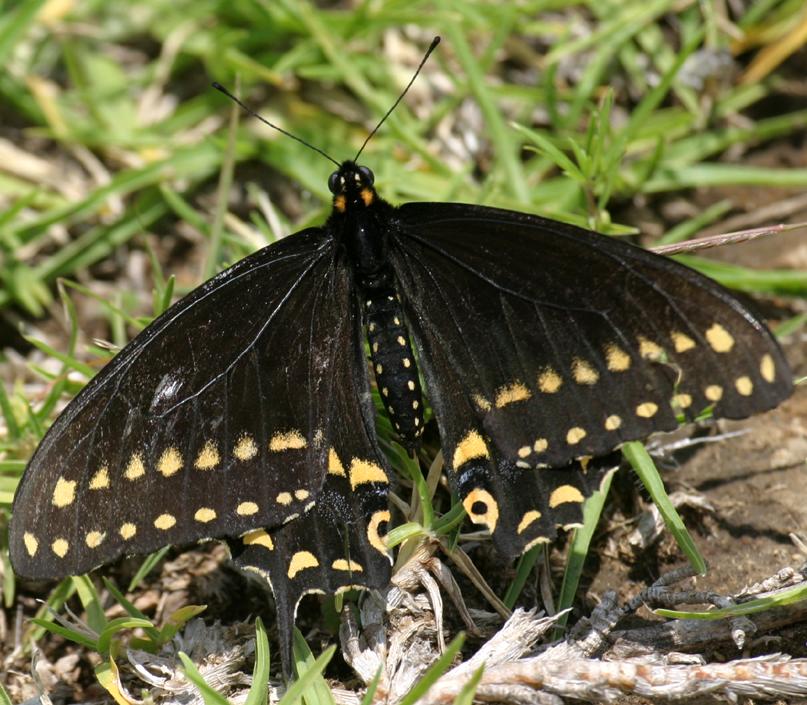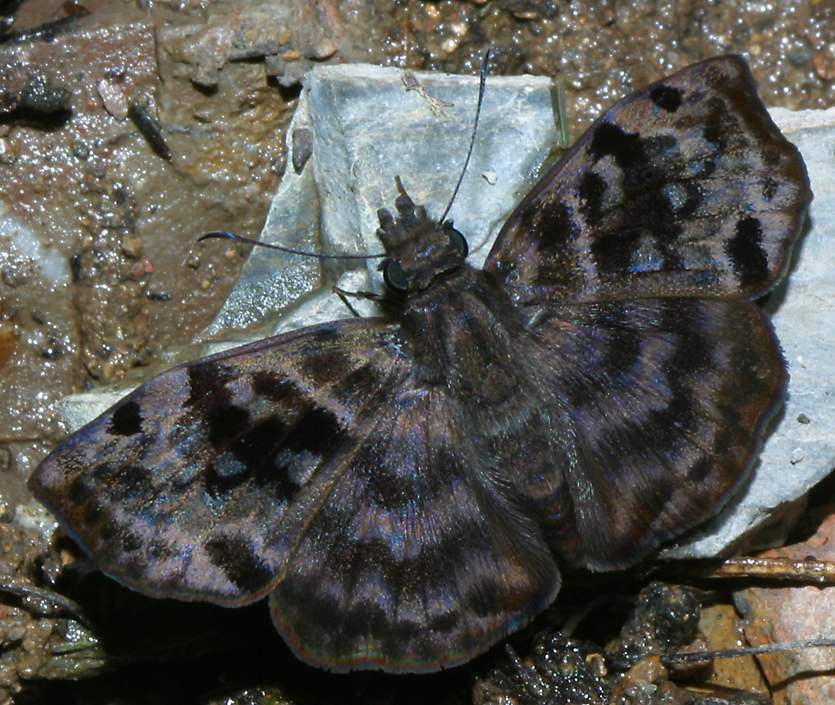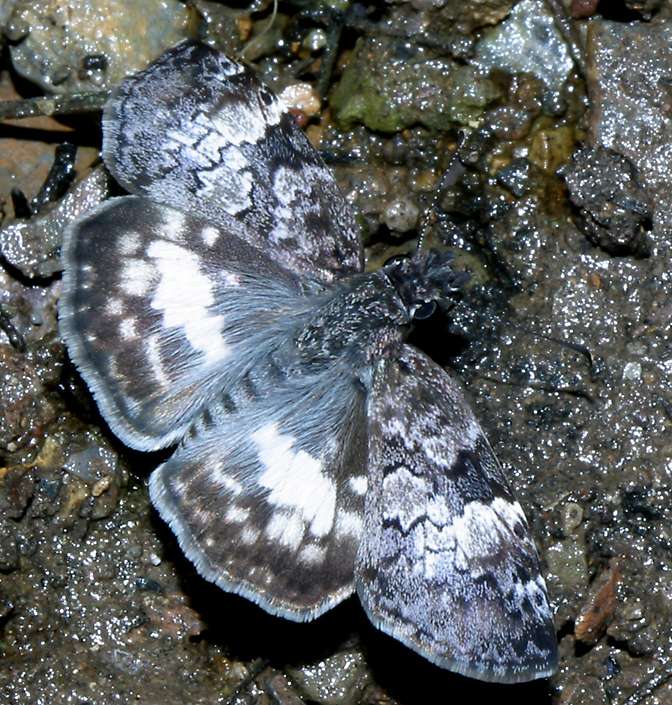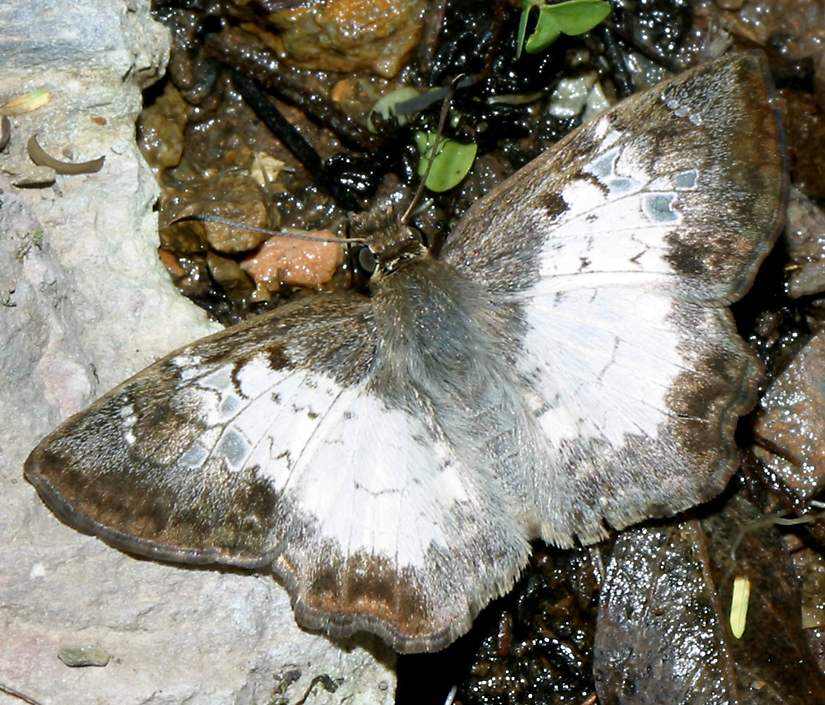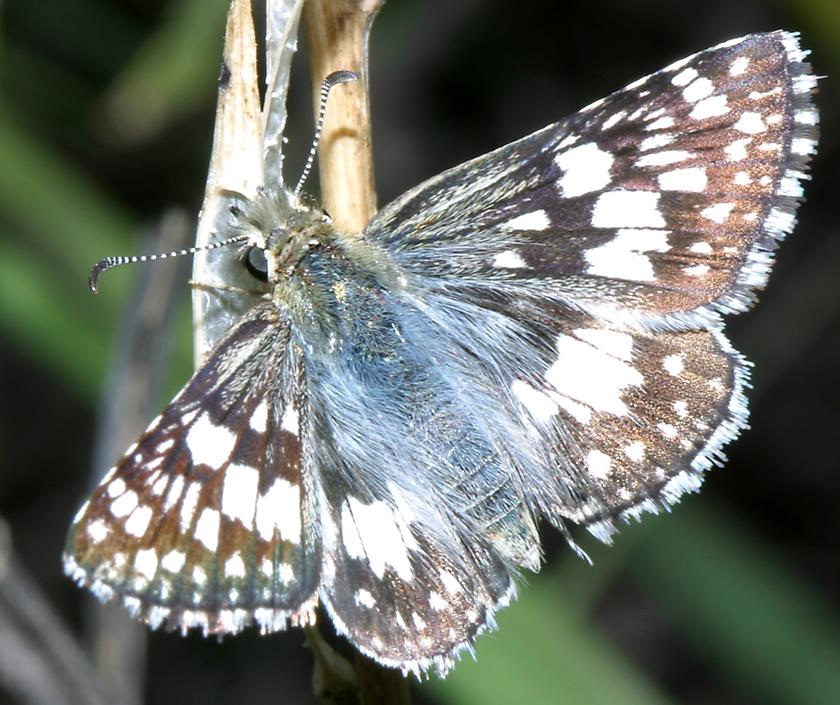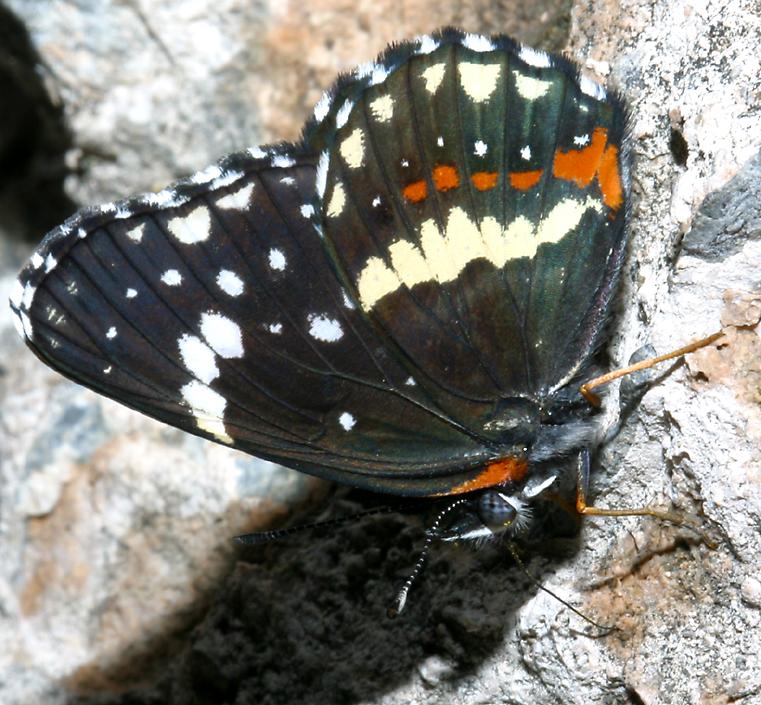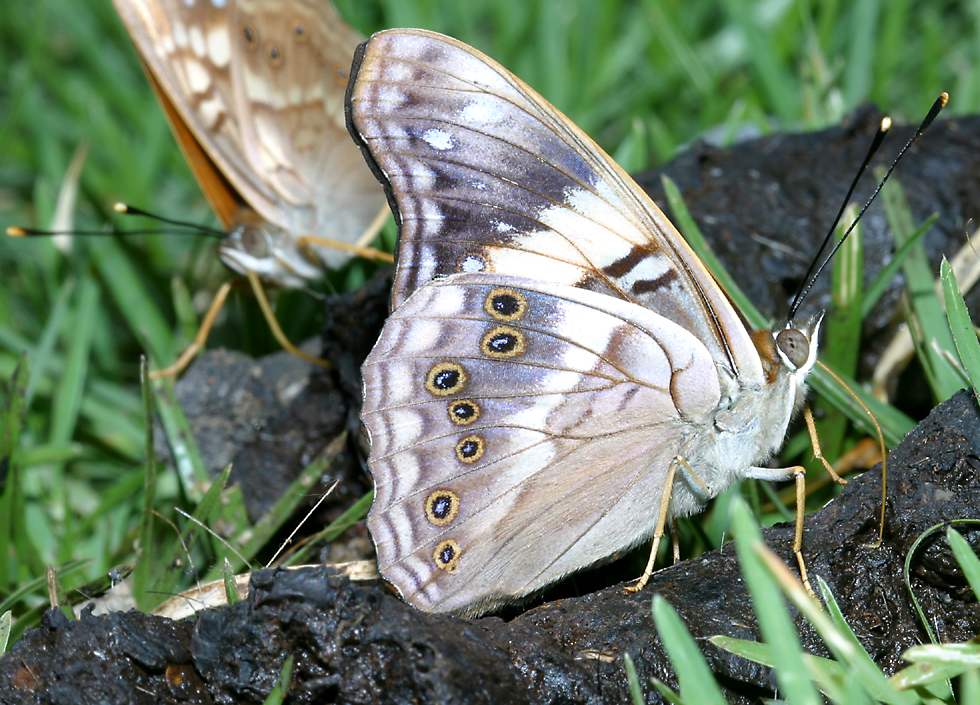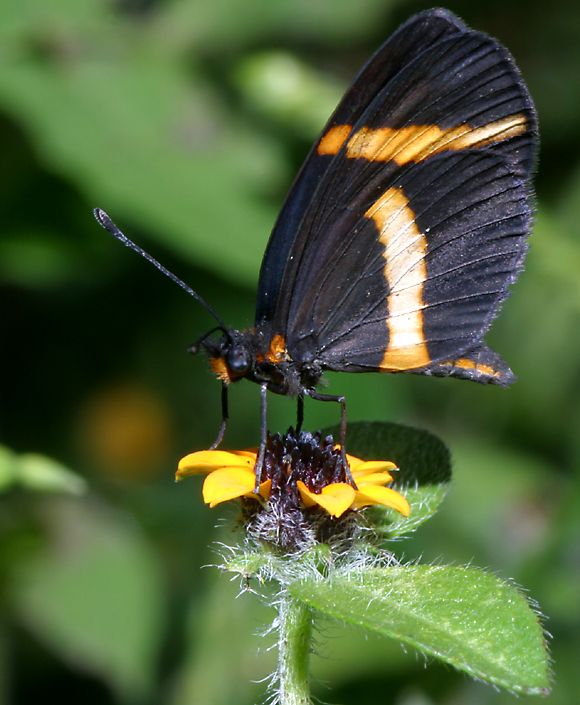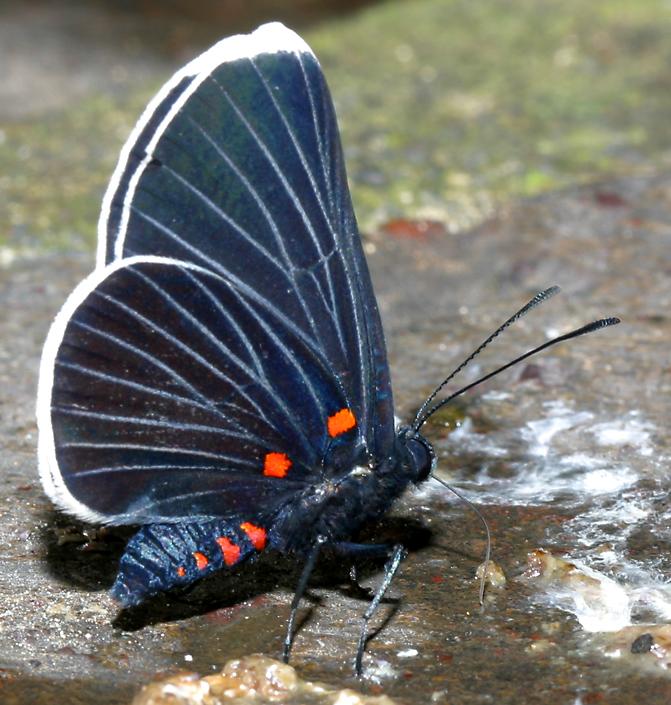Butterflies of Central Mexico
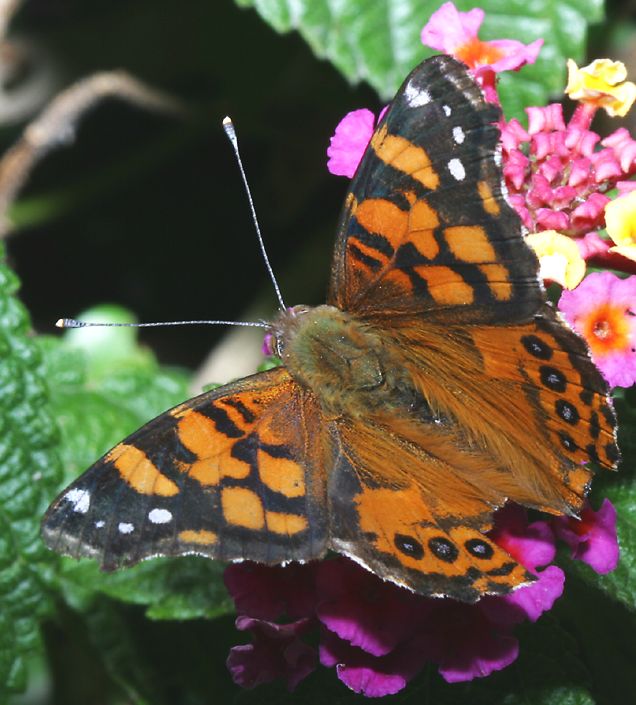
In 2004 I made a week long trip to Mexico city, and the area immediately to the north, east and south, a broad semi-circle from Teotihuacan, eastward to Puebla and then south to Taxco before heading back to Mexico city. The plan was to see modern and colonial era cities as well as older pre-Columbian sites, and also to see as much wildlife as possible. It turns out that I didn't even need to get out of the city to find wildlife, like this West Coast Lady butterfly outside the National Museum of Anthropology, located in the huge Chapultepec Park in the center of the city. Although this individual was happily ensconsed in steamy Mexico, West Coast Lady butterflies can be found all the way into sub-arctic Canada, and they even manage to survive the freezing winters up there, thanks in part to the generous quantity of hair around their bodies. They're very similar in appearance to the American Lady, which can be found in the same range, but the West Coast Lady doesn't have any small white spots in the orange patches on its front wings, and the four spots near the rear of each hind wing all have blue centers and are roughly the same size, though the center two of each foursome are a little larger. |
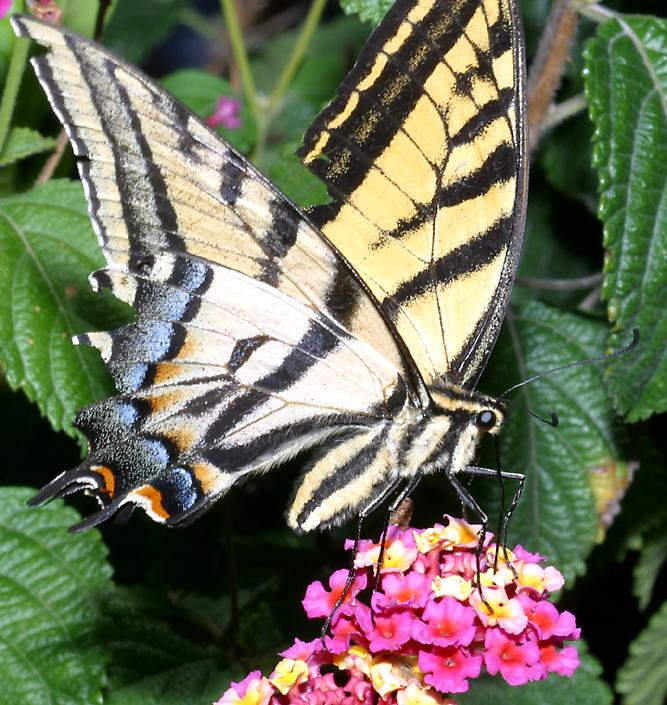
I never actually went into the museum, instead I spent all of my time outside photographing the butterflies attracted to the buddleia flowers in the courtyard. This one is a male two-tailed swallowtail, which is the state butterfly of Arizona. Like the American Lady, this type of swallowtail is found all the way up into the United States and even Canada, though I've never seen it in the north myself, since I've done most of my insect photography east of the Mississippi, which is outside their range. |
|
The one below is a female, which has exactly the same shape as the male but sports very different coloration. |
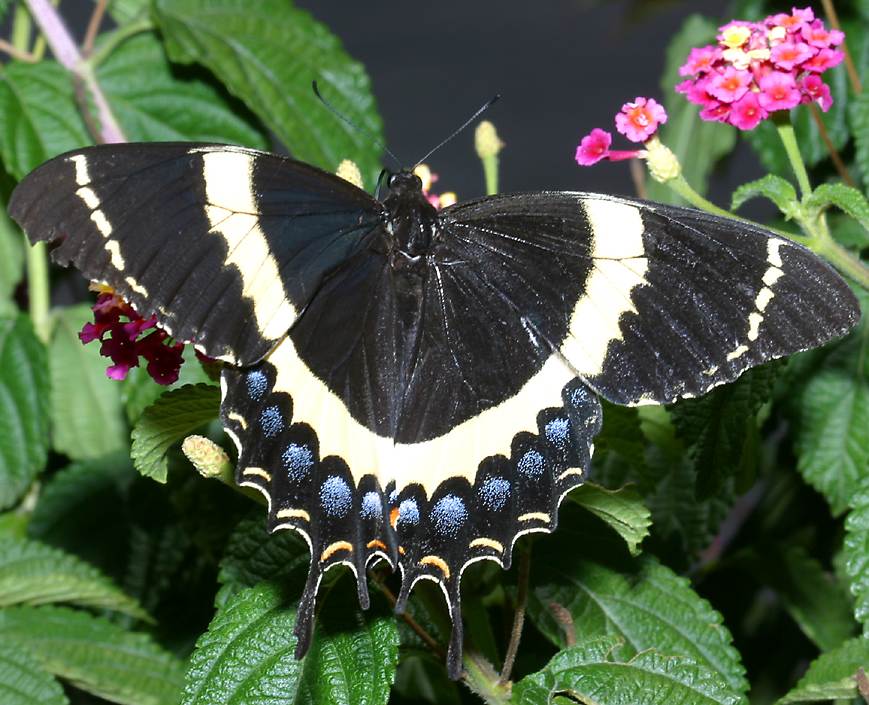 |
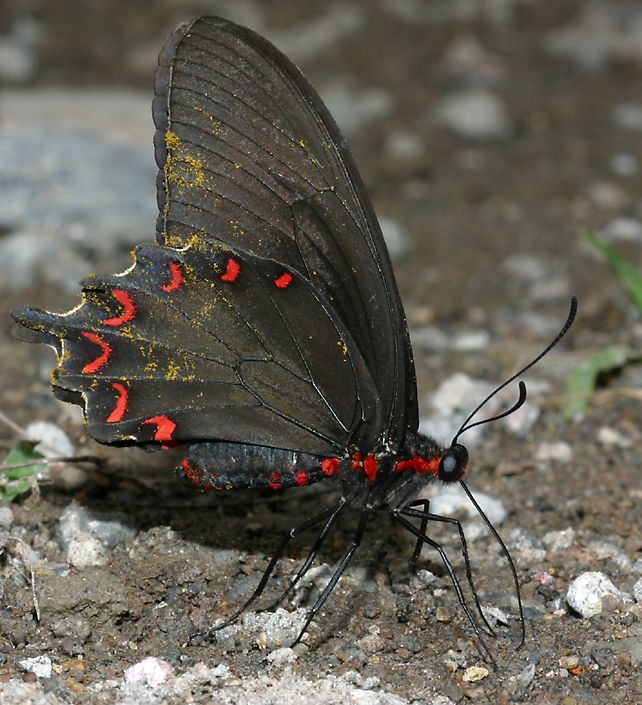
There are many different types of swallowtail scattered around the world, they're mostly quite large and can be very flashy, so I've always had a soft spot for them. However they can be extremely hard to photograph, so I was very pleased to find so many during my time in Mexico. In fact I photographed as many swallowtails in this one week trip as I'd captured in several years in the United States. The one you see here is the exotically named Montezuma Cattleheart, which I photographed outside the enormous Cacahuamilpa Caves (Grutas de Cacahuamilpa). This butterfly is engaged in an activity called "puddling", which involves spending a lot of time sucking up large amounts of liquid in order to extract the salts, which are passed on to the female so she can make her eggs. |

Skippers have some features of butterflies and other features which make them seem more like moths, so there's been a lot of debate over the years about which group they belong to. Most butterflies have clubbed antennae, but the tips of skippers' antennae are curved backwards. They don't have the feathery antennae of many moths, but they do have their mostly dull colors and stubby bodies. |
|
Here's one of the craziest looking skippers I saw. I figured I'd be able to identify this one fairly easily, but in fact I've haven't been able to track down any of these critters! |
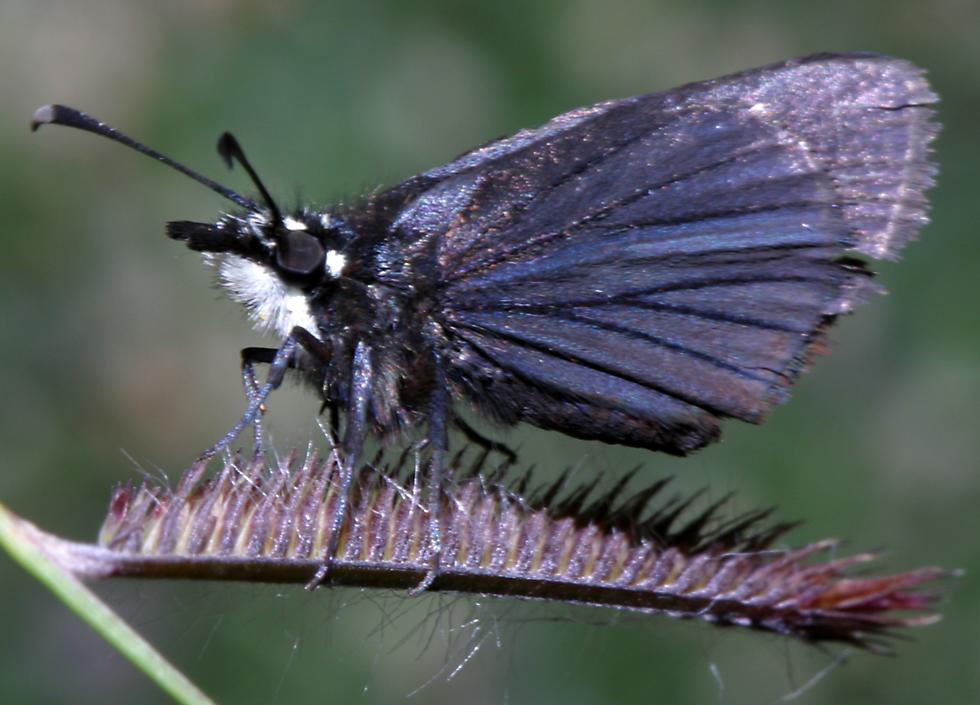 |
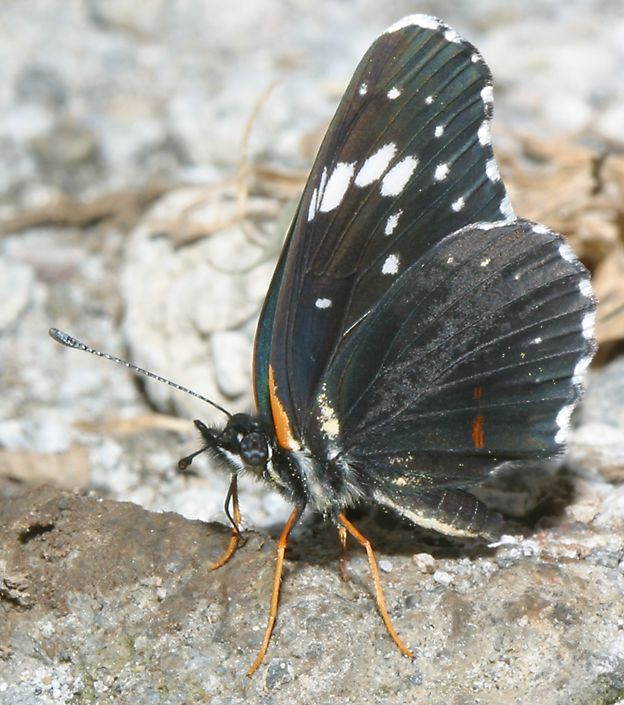
There were plenty of other butterflies at Cacahuamilpa along with the skippers. This one is an unidentified species of "patch" butterfly. Take careful note of how much red and cream is on this one's wings, it's going to become important to know very soon! |
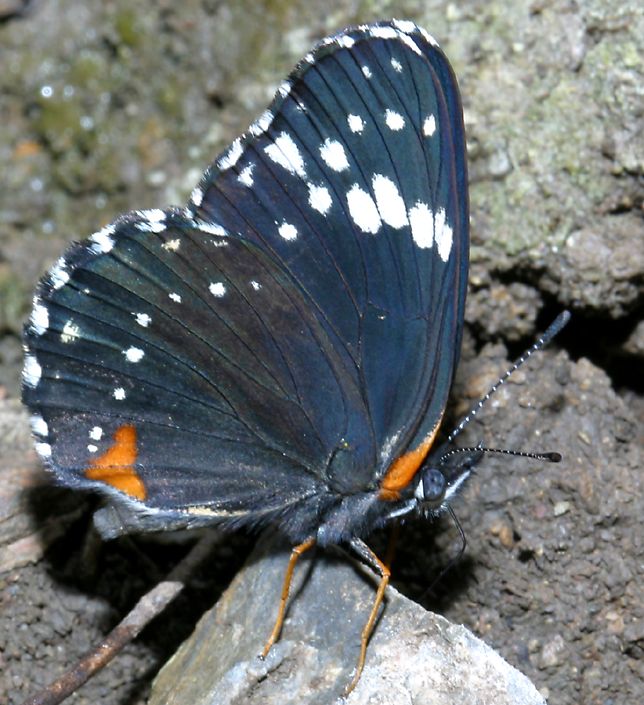
The patches belong to the genus Chlosyne, which is in the same "tribe" (Melitaeini) as the crescents and checkerspots. I'm very familiar with the latter two from the United States, but this was the first time I'd even heard of "patches". The one you see here is also unidentified, you can see that it has more white spots than the previous one, a bit more red but almost no cream at all! |
|
Less red and more cream; this one is a bordered patch. It's another species that ventures into United States, but quite a bit further north than the crimson patch. |
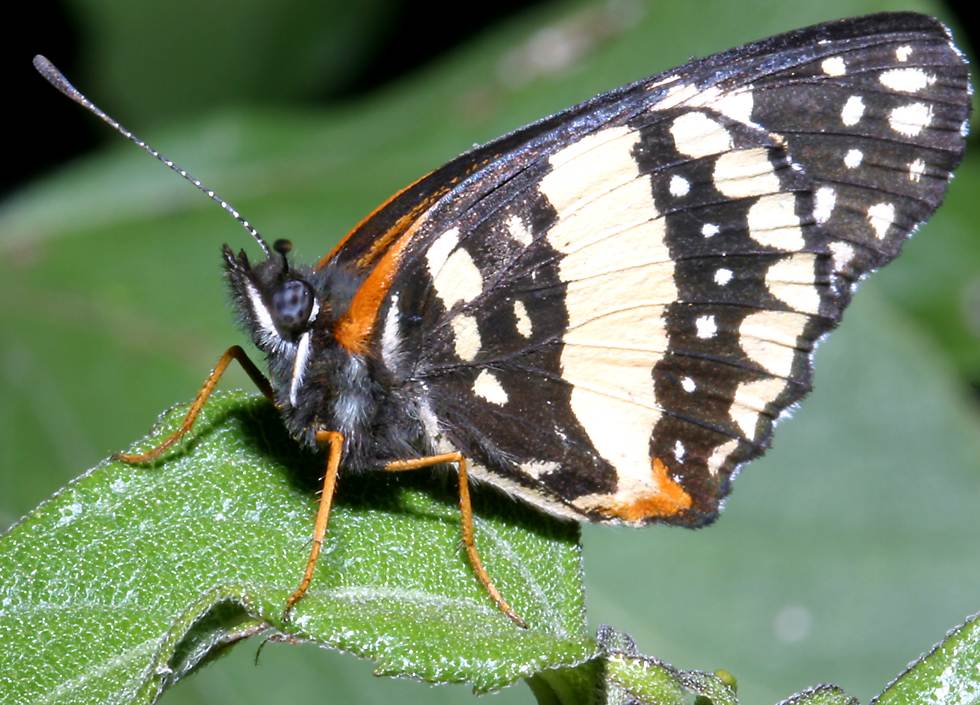 |
|
Enough cream to fill a twinkie, and nice red spots too! This final one is a marina patch, but unlike the previous two species this type isn't found in the United States. |
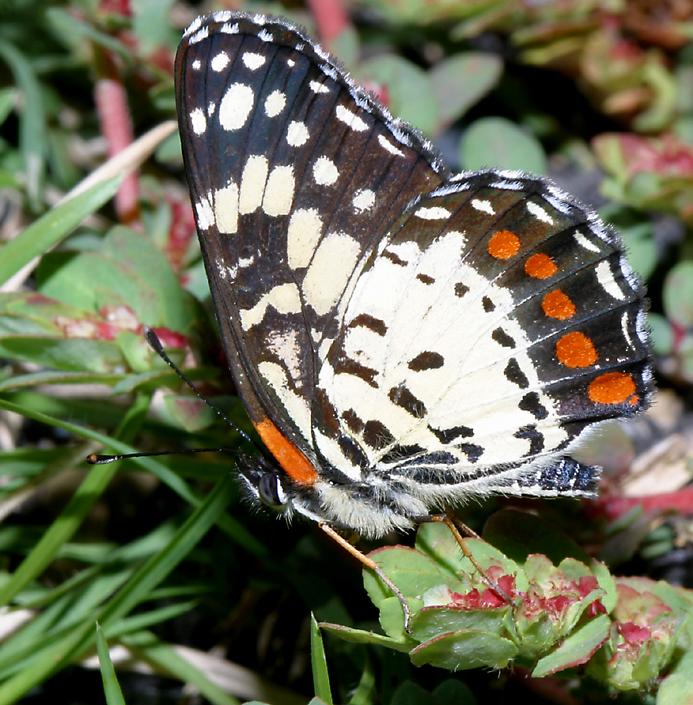 |
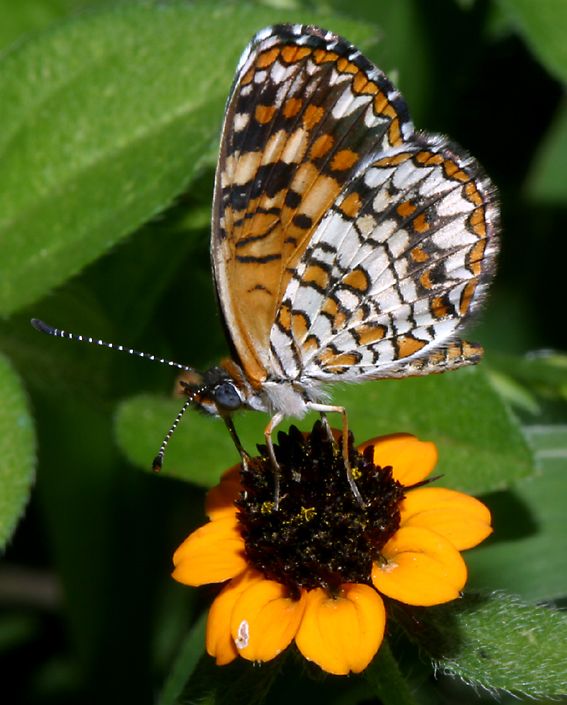
The poop was on a very ordinary looking strip of mown grass along both sides of the road leading to the Cacahuamilpa Caves. There were plenty of flowers and sunshine, so I knew that it was just the right sort of place to find butterflies, and I ended up spending over an hour in this spot. It was a very good site, spoiled only when I unknowingly stood on an anthill and ended up with 40 or 50 angry ants biting my legs! Here on a daisy is some sort of checkerspot butterfly. |
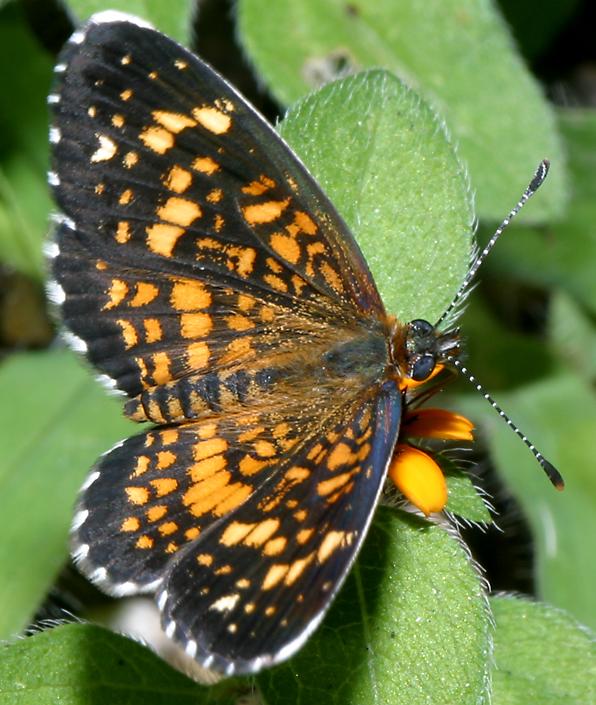
Here's the same individual. The hairs along the back edges of its wings look very fresh and new, so this butterfly probably hasn't been out of the chrysalis too long. Most butterflies don't live much longer than the time it takes to find a mate and reproduce, usually a few weeks. Some don't even have mouthparts to eat or drink, so they have to get hitched really quickly. A few female moths don't even have wings - as soon as they emerge the males find them, mate with them and then the females lay their eggs and die. There are exceptions to this rule of short lifespans, a notable exception being the monarch butterflies which over-winter at El Rosario, west of Mexico city. Some like the mourning cloak and the American Lady we saw earlier even manage to survive the bitterly cold winters of the northern states of the USA, emerging from their shelters while there's still snow on the ground. |
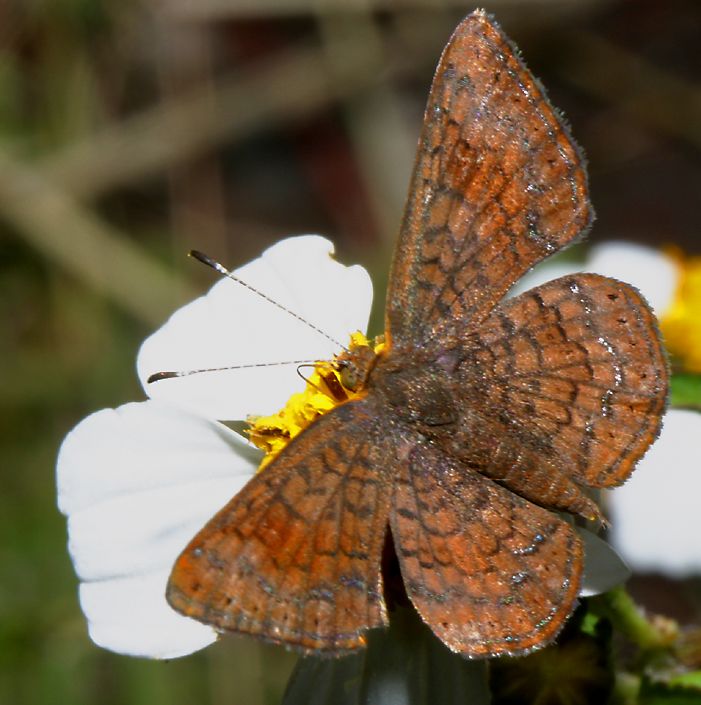
Here's a very typical looking butterfly belong to the metalmark family, with copper colored wings and, not so typically, metallic silver lines traced on the wings. |
|
The bold black, white and red markings are really quite elegant. As you've seen, there are also red spots on its abdomen, and some even have several red spots along the back edges of the hind wings. |
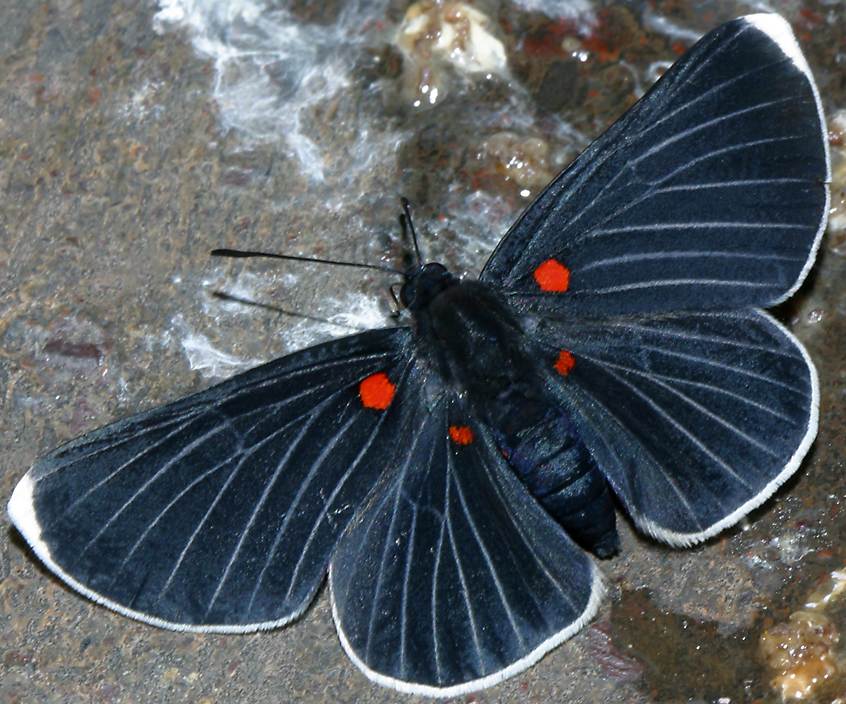
|
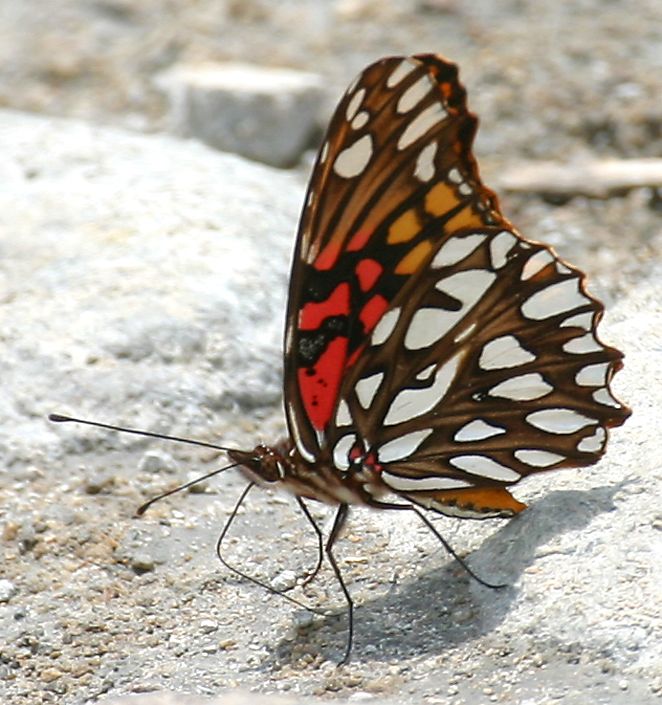
Here's another beauty, one of the fritillary butterflies, which was poking around the ancient ruins at Xochicalco, where there's a large collection of large stone buildings, including a ball court. You can see that this butterfly's tongue is on the ground, but instead of sucking at a water seep or on damp ground it's poking around in dry dust. However, like the butterflies at Cacahuamilpa it's also puddling, but this time it's doing it by passing saliva down its proboscis, and then sucking the liquid and salts back up. |
